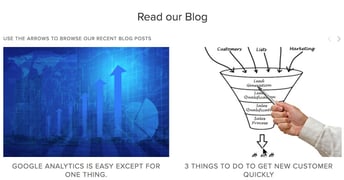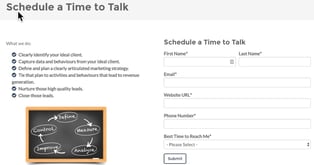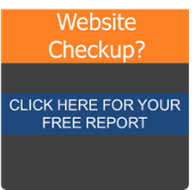Will a high bounce rate kill your business?
Dec 28, 2016
Bounce Rate as measured in Google Analytics is when 1 page is visited on your website and the user leaves without visiting any other pages that session. As with all analytics, a single metric rarely tells the whole story. When might you expect a high bounce rate on your website?
Blog Page- If someone reads your blog, then exited your website, this would be a bounce. In this case bounce rate alone does not tell the story. Time on Page will let you know if the blog is providing content worth reading. You may have an existing  customer who enjoys your blog and visits your page for just that reason. They are measured as a bounce, but time on page indicates a level of engagement. That being said, you should consider a Call To Action that encourages the reader to engage further with your website.
customer who enjoys your blog and visits your page for just that reason. They are measured as a bounce, but time on page indicates a level of engagement. That being said, you should consider a Call To Action that encourages the reader to engage further with your website.
Contact Us- We have all done this. You search for a business and click on the contact page for the address or phone number. Time on Page is minimal and you bounce right off. The page achieved its purpose.
Product Page- A visitor comes to a product page and buys the product then leaves. This is a bounce. In context this is not a bad thing to happen. However, if Time on Page is long and no purchase is made you may have a problem.
Submission Page/Form- Once a visitor has filled out your form it would not be uncommon for them to leave this page. This would be counted as a bounce. In a perfect scenario your page was  bookmarked and they researched other companies and came back. Their previous visit established the trust and credibility they needed to purchase from you.
bookmarked and they researched other companies and came back. Their previous visit established the trust and credibility they needed to purchase from you.
Technical Support Pages- If the goal of the page is to provide a User Manual or answer questions quickly it would not be unreasonable to see a high bounce rate.
So, when is a high Bounce Rate a danger sign to your business?
Website Home Page- If you are seeing a high bounce rate on your home page you are in trouble. The SEO- Search Engine Optimization- efforts you have taken to bring visitors to your sight has been a waste of time. It is common for people to get excited about the high volume of traffic that SEO programs can achieve. The reality is a website that does not engage visitors will not generate revenue for your business. Rest assured people will talk and the last thing any business wants is to be the topic of conversation at a networking event and the comment is made "Their website sucks!".
Landing Pages from Ad Campaigns- It is critical that you link your ad campaigns to Google Analytics. If you are using Google AdWords this is a simple mouse click. Most email clients also allow you to track results in Google Analytics. Make sure you click that box. If you are not using any of the above you can use Google's URL Builder to track results. If you are seeing a high bounce rate from clicks from an email or ad campaign you have a serious problem. The message that brought people to the page is not the message you promised based on the ad or email. Unless you just like trowing away money you need to ensure that you delivered what you promised. Do not send an ad for windshield wipers to your home page. Create a page that supports the message and content of your ad or email.
For detailed and granular expanation check out this great article from my friend Prateek Agarwal:
A Complete Guide to The New Google URL Builder.
Landing Pages- If you are seeing a high bounce rate on any of your other pages you need to take a close look at Time on Page. If Time on Page is a few seconds, you probably have poor content that does not engage visitors. If Time on Page is reasonable for the content, do you have a Call To Action? If you do not ask people to do something how will they know what to do? A Call To Action can be a link to your blog, a clickable graphic that takes them to another page, a link or graphic that offers additional information. Don't leave them hanging!
.png?width=300&height=112&name=1627070024034-Analytics_That_Profit_Logo_Reverse-1%20(1).png)
.png?width=2080&height=776&name=1627070024034-Analytics_That_Profit_Logo_Reverse-1%20(1).png)


